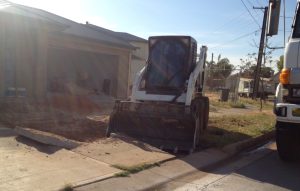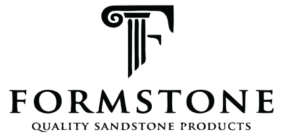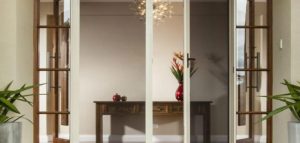Here are some tips to make the most of your next concrete project. Whether you’re pouring concrete in cold weather or using a bull float for a smooth finish, these tips will help you get the job done right. In addition, you’ll be able to mix concrete more easily, and the job will be done in less time.
Pouring concrete in cold weather
Pouring concrete in cold weather can be a challenge. While concrete is resistant to cold, low temperatures can compromise the strength and durability of the final product. In addition, cold weather can cause uneven curing and cracks in concrete, making it essential to plan the pour before it begins properly. Here are some tips to ensure the best pour possible in cold weather.
Firstly, increase the cement-to-water ratio. Using more cement in a mix will produce a higher-density cement paste. It will improve the strength of the concrete and give it a better weather-resistant quality. Also, use tarps to keep the concrete warm. If the weather turns bad, it would be best to have blankets and tools in a truck or trailer. In addition, use lights as needed.
Another important tip is to make sure you have enough water in your mix. If you don’t have enough water in your mix, you might have a problem with the strength of the concrete. You can add temporary heat before placing the concrete and additional heat during and after the pour. Additionally, you should consult an experienced concrete supplier for the best concrete mix for the specific project.
Pouring concrete in cold weather can be challenging, but following the right steps can make it a successful project. Cold weather can change several factors related to pouring concrete, including the hydration level and freezing risks. In addition to the freezing risk, cold weather can also affect the durability of the concrete.
When best concreting Adelaide in cold weather, you should ensure the temperature is between 50 and 60 degrees Fahrenheit. If the temperature falls below these levels, the chemical reaction that sets and strengthens the concrete is slowed. Consequently, cold weather can cause concrete to crack or even break. In addition, it will take more time for concrete to reach the required strength. Despite these risks, pouring concrete in cold weather is still possible and can result in the strength and durability you need for the project.
Pouring concrete in cold weather is much more challenging than pouring it in warmer weather. The concrete needs to be protected from freezing during the first 24 hours after it is poured; otherwise, it will lose its strength and become brittle. After that, take the proper precautions and follow the proper planning to make it a success. You can use special techniques to help keep the concrete warm.
Creating control joints in concrete
When a concrete slab is being built, it is important to create control joints. These joints will prevent cracks in the concrete from forming in undesired areas. They should be created at regular intervals along the slab. These joints can also prevent shrinkage and creep of the concrete.
The width of control joints should be at least 1/4 of the thickness of the concrete slab. For example, if the concrete slab is four inches thick, the control joint should be an inch wide. Unfortunately, finishers often cut their control joints much shallower than needed. Generally, control joints in concrete slabs are created in rectangles and squares. In the case of a square slab, the ratio is usually 1.5 to one.
Control joints are not required in every situation but are important for structural stability. When used properly, they can reduce the risk of cracks and other undesirable effects of shrinkage. Control joints can be created by sawcutting or tooling and should be spaced approximately 8 to 12 feet apart.
Control joints are made by using a concrete-based joint mix. These joints are usually rounded at the upper edges. In some cases, these joints extend a few inches into the concrete, or they can extend the full depth of the concrete slab. When these joints extend into the concrete, they are filled with flexible material. These joints also help keep the concrete strong while the soil settles.
Decorative control joints are often cut with saws or a groover tool. For aesthetic purposes, these joints can be cut about 1/4 inch deep, while they must be at least 25 percent of the concrete slab thickness for functional purposes. They can be cut in fresh concrete, but it is best to cut the joints within six to eight hours of the pour.
Another way to transfer out-of-plane shear loads is to use a shear key. This device is shown in Figures 3a, 3d, 3e, 3f, and 3i. Smooth dowel bars are placed across the control joint and are typically greased or placed in a plastic sleeve to avoid bonding. Another variation of this method is to use a horizontal bond beam reinforcing bar and debond it so that the bar can move longitudinally.
Control joints can also be used to divide a wall into isolated panels. Control joints are commonly used to create a structural design element called a “key”. The maximum spacing for control joints is listed in Table 1 below, based on empirical criteria and a history of successful construction in various geographic conditions.
Grooving tools are made from heavy-gauge steel and bronze and cost about $25 to $35. Using a saw is another option for cutting concrete joints. A cordless concrete saw can also be used for this purpose. A concrete saw is a powerful tool, but it creates a lot of dust and is difficult to handle on a small slab.
Using a bull float to finish concrete
 If you’re building a concrete foundation, you’ll likely want to finish the surface before using it for other projects. A bull float is an important tool to use for this purpose. The float works by flattening holes in the concrete surface, embedding the aggregate particles further, and smoothing it out. It’s best to use a bull float with rounded ends, as square ones make the job more difficult.
If you’re building a concrete foundation, you’ll likely want to finish the surface before using it for other projects. A bull float is an important tool to use for this purpose. The float works by flattening holes in the concrete surface, embedding the aggregate particles further, and smoothing it out. It’s best to use a bull float with rounded ends, as square ones make the job more difficult.
A bull float is a metal float with a detachable handle that you can use to float the concrete. It should be long enough to reach across the slab. When using a bull float, you should be careful not to push too hard. Excessive floating can draw bleed water into the concrete, weakening the surface. Ideally, two to three passes are enough to smooth the surface.
Bull floats can also be used to smooth out a slab after screeding. Bull floats are longer and wider than hand floats and can be as large as three feet long. Because they’re larger, they can reach a larger area. However, they can also produce a wavier surface than hand floats. Another important aspect of bull floats is that they’re angled so they can be adjusted for different angles.
Bull floats are generally made from aluminium or magnesium. However, some are made with fibreglass handles, which are safer than aluminium or magnesium. And the bull floats with handles made of fibreglass and won’t conduct electricity. And while some bull floats come without bracket assemblies, many come with adjustable tilt-action brackets.
Floats are a very important tool to use when finishing concrete. They help smooth out surface voids and smooth out the concrete. The purpose of the float is to level the surface before troweling. The float should also remove any excess water accumulated on the surface. If there is excess water, it must be removed before the concrete weakens.
Bull floats can be made of wood or resin. The resin ones are more durable and can resist warping than wood floats. They can be purchased in various sizes and styles, and they usually have a long handle and can be used in different applications.

 Stainless
Stainless  Aside from changing the look, custom body shops also modify the vehicle’s aerodynamics and performance. For instance, they can add downforce to improve cornering and tire adhesion. They can also change the car’s suspension and exhaust system.
Aside from changing the look, custom body shops also modify the vehicle’s aerodynamics and performance. For instance, they can add downforce to improve cornering and tire adhesion. They can also change the car’s suspension and exhaust system.